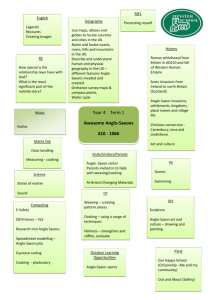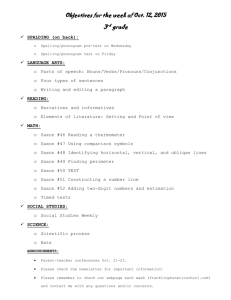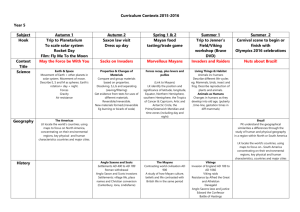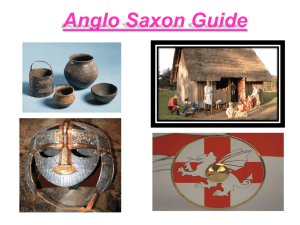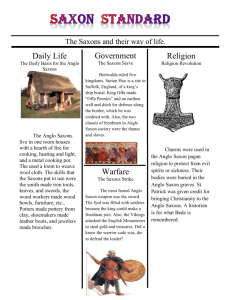William Strengthens
advertisement
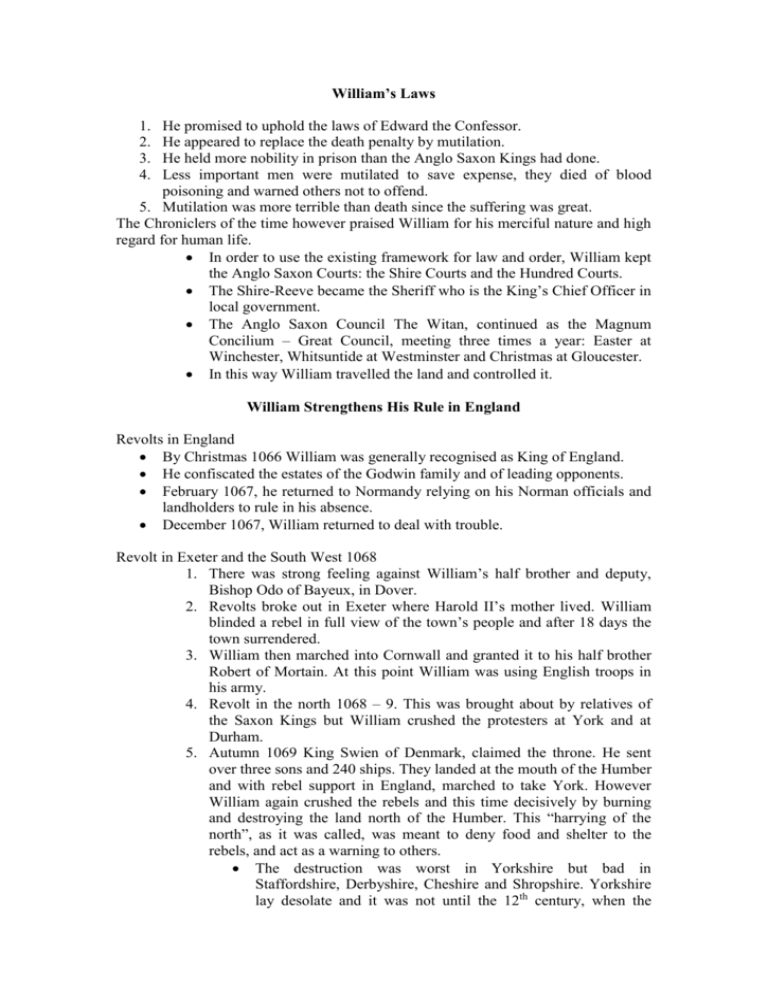
William’s Laws 1. 2. 3. 4. He promised to uphold the laws of Edward the Confessor. He appeared to replace the death penalty by mutilation. He held more nobility in prison than the Anglo Saxon Kings had done. Less important men were mutilated to save expense, they died of blood poisoning and warned others not to offend. 5. Mutilation was more terrible than death since the suffering was great. The Chroniclers of the time however praised William for his merciful nature and high regard for human life. In order to use the existing framework for law and order, William kept the Anglo Saxon Courts: the Shire Courts and the Hundred Courts. The Shire-Reeve became the Sheriff who is the King’s Chief Officer in local government. The Anglo Saxon Council The Witan, continued as the Magnum Concilium – Great Council, meeting three times a year: Easter at Winchester, Whitsuntide at Westminster and Christmas at Gloucester. In this way William travelled the land and controlled it. William Strengthens His Rule in England Revolts in England By Christmas 1066 William was generally recognised as King of England. He confiscated the estates of the Godwin family and of leading opponents. February 1067, he returned to Normandy relying on his Norman officials and landholders to rule in his absence. December 1067, William returned to deal with trouble. Revolt in Exeter and the South West 1068 1. There was strong feeling against William’s half brother and deputy, Bishop Odo of Bayeux, in Dover. 2. Revolts broke out in Exeter where Harold II’s mother lived. William blinded a rebel in full view of the town’s people and after 18 days the town surrendered. 3. William then marched into Cornwall and granted it to his half brother Robert of Mortain. At this point William was using English troops in his army. 4. Revolt in the north 1068 – 9. This was brought about by relatives of the Saxon Kings but William crushed the protesters at York and at Durham. 5. Autumn 1069 King Swien of Denmark, claimed the throne. He sent over three sons and 240 ships. They landed at the mouth of the Humber and with rebel support in England, marched to take York. However William again crushed the rebels and this time decisively by burning and destroying the land north of the Humber. This “harrying of the north”, as it was called, was meant to deny food and shelter to the rebels, and act as a warning to others. The destruction was worst in Yorkshire but bad in Staffordshire, Derbyshire, Cheshire and Shropshire. Yorkshire lay desolate and it was not until the 12th century, when the Cistercian monks built their great abbeys in the Dales and developed their sheep farming industry, that prosperity returned. 1. Resistance at Ely: Hereward the Wake. The Danes had retired to their ships at the mouth of the Humber and King Swein was given money to return home. Resistance at Ely was left to Hereward and Earl Morcar. Eventually the English were defeated and a great cathedral built to commemorate the last English revolt and Norman victory. 2. 1072 and1080 William invades Scotland and forces Malcolm to do homage to him as King. 3. 1075 Revolt of the Norman Earls: William again crushed the rebels and in doing so won much English support. Bishop Odo and others are said to have cut off the right foot of every prisoner taken. 4. Destruction of English thegnhood (nobility). The risings against William over a nine-year period destroyed the old English nobility. William was able to hold down England with a relatively small army but undoubtedly he had some of the best-equipped and most experienced Knights in Europe. Castles These were built everywhere to help gain and keep control. They were built first in wood and then in stone. From the castles the Barons dominated the countryside. The defence of the Welsh and Scottish marches (frontier areas) was a special problem. William gave his half brother Odo, whom he later imprisoned, the Earldom of Kent and to guard against cross channel invasion. Three marcher Earls defended the Welsh border: Chester, Shrewsbury and Hereford. The northern frontier was defended by the bishopric of Durham and later a castle was built on the Tyne at a place we now call Newcastle. Within these frontiers the country was ruled through the feudal system. See Castle Section online www.schoolhistory.co.uk




